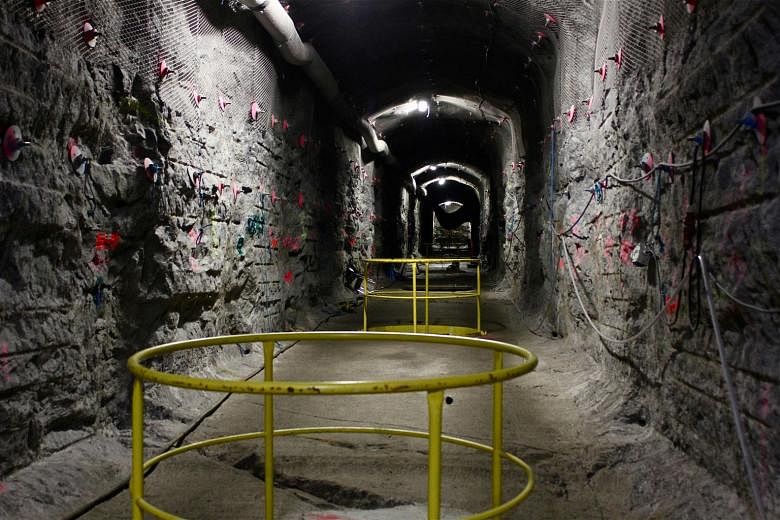EURAJOKI (Finland) • Deep underground on a lush green island, Finland is preparing to bury its highly radioactive nuclear waste for 100,000 years - sealing it up and maybe even throwing away the key.
Tiny Olkiluoto, off Finland's west coast, will become home to the world's costliest and longest-lasting burial ground, a network of tunnels called Onkalo - Finnish for "The Hollow".
Countries have been wrestling with what to do with nuclear power's dangerous by-products since the first plants in the 1950s. Most nations keep the waste above ground in temporary storage facilities. Onkalo is the first attempt to bury it for good.
Starting in 2020, Finland plans to stow around 5,500 tonnes of nuclear waste in the tunnels, more than 420m below the earth's surface.
Already home to one of Finland's two nuclear power plants, Olkiluoto is now the site of a tunnelling project set to cost up to €3.5 billion (S$5.4 billion) until the 2120s, when the vaults will be sealed for good.
"This has required all sorts of new know-how," said Mr Ismo Aaltonen, chief geologist at nuclear waste manager Posiva.
Eventually the nuclear warren will stretch 42km.
The temperature is cool and the bedrock is extremely dry - crucial if the spent nuclear rods are to be protected from the corrosive effects of water.
The waste is expected to have lost most of its radioactivity after a few hundred years, but engineers are planning for 100,000 years, just to be on the safe side.
Spent nuclear rods will be placed in iron casts, then sealed into thick copper canisters and lowered into the tunnels.
Each capsule will be surrounded with a buffer made of bentonite, a type of clay that will protect the capsules from any shuddering in the surrounding rock and help stop water from seeping in.
Clay blocks and more bentonite will fill the tunnels before they are sealed up.
The method was developed in Sweden for a similar project.
The main issue is ensuring the tunnels are completely inaccessible to curious onlookers or anyone seeking to make off with the waste.
But opponents of nuclear power, such as Greenpeace, are concerned about potential radioactive leaks.
"Nuclear waste has already been created and therefore something has to be done about it," said the group's Finnish spokesman Juha Aromaa. "But certain unsolved risk factors need to be investigated further."
Planning the nuclear graveyard involves asking the impossible - how can we know what this little island will be like in 100,000 years?
To put the time frame into perspective: 100,000 years ago, Finland was partly covered by ice, Neanderthals were roaming Europe and Homo sapiens were starting to move from Africa to the Middle East.
Geologists cannot rule out another ice age. Engineers must ensure Onkalo can withstand any tectonic motion caused by another deep chill in the millennia to come.
A study last year by the University of Turku warned that in a new ice age, the permafrost could reach some 200m deeper than where the rods would be buried.
There is also the question of the people living on the island.
Mr Aaltonen admits it is impossible to predict what kind of civilisation might be settled there in 100,000 years .
AGENCE FRANCE-PRESSE

